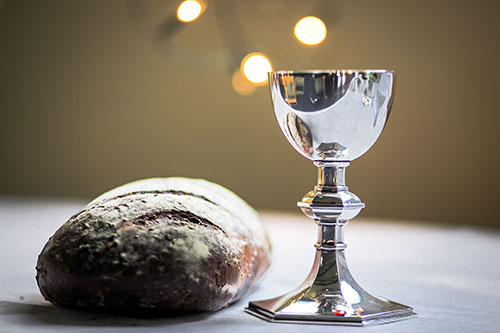
All over the South Pacific, on Sunday Anglicans (and others) prayed:
Praise and glory to you creator Spirit of God;
Day of Pentecost Prayer after Communion – A New Zealand Prayer Book He Karakia Mihinare o Aotearoa page 541
you make our bread Christ’s body
to heal and reconcile
and to make us the body of Christ.
You make our wine Christ’s living sacrificial blood
to redeem the world.
You are truth.
You come like the wind of heaven, unseen, unbidden.
Like the dawn
you illuminate the world around us;
you grant us a new beginning every day.
You warm and comfort us.
You give us courage and fire
and strength beyond our everyday resources.
Be with us Holy Spirit in all we say or think,
in all we do this and every day.
There is much that can and some things that should be said about this prayer. It is unusual in the Christian tradition to address the Third Person of the Trinity – especially in public liturgy. If anyone knows the history of this prayer (who wrote it, was it revised,…), do let us know. Certainly, it went through the formal processes which make it part of our Church’s formularies (this formally expresses our Church’s teaching and practice).
I’m highlighting it as dovetailing with a couple of relatively-recent series on this site.
Firstly, the nature of Christ’s presence in relation to the bread and wine: “you make our bread Christ’s body” (no hedging about here; no “for us” or “to us”). “You make our wine Christ’s living sacrificial blood to redeem the world.”
And secondly, sacrifice – especially as it relates to the Eucharist: “You make our wine Christ’s living sacrificial blood to redeem the world.”
If you appreciated this post, consider liking the liturgy facebook page, using the RSS feed, and/or signing up for a not-very-often email, … if you are on Instagram, please follow @liturgy.




Most apt and powerful use of words. Interesting also how they emphasise the impetus to then be active (in the world) because of this change? Transformational change is expected in those witnessing the revelation – not simple perception?
Can you explain? I thought that in Protestantism that transubstantiation was purely symbolic and not actual?
Please, David, what are you asking to have explained? Transubstantiation is a theory or model based on Aristotelian metaphysics explaining how Christ is present in the consecrated bread and wine. Transubstantiation cannot be either symbolic or actual – it is simply transubstantiation. Blessings.